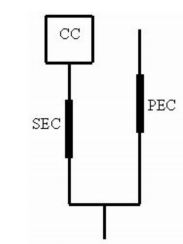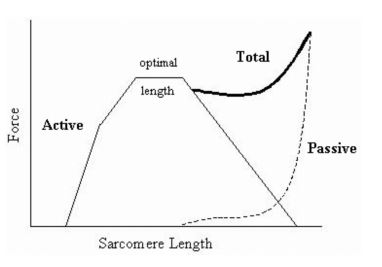Restore: the hips program
advanced progressions for stability and strength
rear foot elevated split squat: eccentric-quasi-isometric
The Rear Foot Elevated Split Squat (RFESS) exercise is an extremely effective and efficient way to improve both hip and leg stability and strength. With the “EQI” aspect, we’re bringing in a challenging variation that is super time-efficient and effective!
But it IS challenging. Both mentally and physically. These are uncomfortable, to say the least. 🙂
The key is to start small with 15 to 30 seconds in position, and then progress from there. You will see some specific targets within the plan. Do your best to stick with the progression. You won’t be sorry!
If you’d like to learn the SCIENCE behind this approach, you’ll find that deep-dive right below the instructional video. Enjoy the reading and learning.
As I say often, “when we understand the why behind an exercise and a little bit of the science behind it, that empowers us even more to embrace the process!”
All you ever wanted to know about Eccentric Quasi-Isometrics!
Eccentric Quasi-Isometrics (EQIs) (Siff 1994) are not your ordinary type of strength training. Or stretching. (Yes, both are happening during this exercise!)
As such, they may be able to deliver results and benefits that you won’t see with any other type of training.
Please notice that I say, may be able to. This statement means that no DIRECT research that I know of has been done on the effects of this specific type of muscle action.
All of the information I’m presenting to you here is based on either published research on topics indirectly related to EQIs or on anecdotal evidence gathered from the real-world application of EQIs with athletes, and from my own experience.
Make no mistake about it, the effects of EQIs have not been written about in many places, but know that everything I’m sharing with you is theory, based on direct anecdotal and indirect empirical evidence.
What are EQIs?
EQIs are essentially just what the name says:
- Eccentric: The muscles are lengthening as they are contracting.
- Quasi-Isometrics: The action is very slow (nearly static).
First, some basic muscle physiology that forms the basis for EQIs.
The three element muscle model says this: Muscle is made up of, or constituted by a CONTRACTILE element (CC), and two ELASTIC (aka spring) components, one in series with the CC (SEC) and the other in parallel (PEC).
So…
1. Contractile Component (aka element) (CC): what creates active tension in the muscle
2. Parallel Elastic Component (PEC): passive tension – works in parallel with the CC. The
PEC is responsible for passive flexibility.
3. Series Elastic Component (SEC): under tension whenever the CC is under tension, e.g.
works in series with the CC. The SEC is responsible for dynamic (active) flexibility.

A graphical representation of the 3-Element Muscle Model. (Source: “Tendinitis: its etiology and treatment” by Sandra Curwin and William D. Standish)
The graphic gives you a visual representation of how this looks.
What does this mean?
Let’s cover some basics in as simple terms as I can. (I’m going to include a few footnotes too, because I made a record of these when researching many moons
ago). 🙂
*Remember, when a muscle is lengthened, tension is produced (think of stretching a rubber band).
*Lengthened muscle represents the flexibility of that muscle.
*There are two types of flexibility (tension), passive and active.
• Active = moving. Muscle force or dynamic activity produced throughout a ROM.
• Passive= non-moving. Static, produced at a certain (usually extended) ROM.
As this relates to the CC, PEC, and SEC.
*Traditional stretching methods typically only stretch the PEC. If the emphasis is put on traditional methods of stretching, then primarily the PEC will become more flexible.
*When you stretch traditionally, the SEC are not lengthened or stretched. This worsens the ratio of passive (which the PEC is responsible for) to active flexibility (which the SEC is primarily responsible for).
**This is one reason why some experts/researchers have linked traditional stretching to increased injury risk (Lashvili 1982).
Research has shown that there is a greater correlation between active flexibility and sports performance than passive flexibility and sports performance (I bet you already figured that out, right?) 🙂
Would you like to print all of this information on a PDF for off-line reading? If so, CLICK HERE!
*Stretching a muscle under tension will have a greater effect on the SEC, since it works in series with the CC.
*Having the SEC in series with the CC means that the SEC will be under tension when the
CC produces tension (Levangie and Norkin 2001-Joint Structure and Function).
*The total tension in a muscle is the sum of both active and passive tensions.
*As the CC lengthens or shortens, so does the PEC (remember, it works in parallel with the CC).
*Since traditional “passive” stretching primarily impacts the PEC, the SEC is left unstretched.
This is important to note because one of the primary applications of passive static stretching is to re-lengthen the muscle after work that involves contraction (e.g. strength training or any other kind of active training or “work”).
*Passive (traditional) stretching does not stretch the components of muscle that are involved in contraction!
*As the PEC lengthens it produces more and more passive tension (since it is in parallel to the CC). However, the CC of muscle has a specific range in which it produces the greatest amount of tension.

This Isometric Length-Tension Relationship. (Source: “Joint Structure and Function: A Comprehensive Analysis” 3rd Ed. by Pamela K. Levangie and Cynthia C. Norkin)
If the CC is shortened or lengthened beyond this range, then the tension it produces will decrease. This is known as the isometric length-tension relationship.
This is best visually represented in this graphic to the left!
How does this relate to our EQIs?
Since the SEC acts in series with the CC, the SEC is also under tension.
Remember however…that when you first begin (whether it’s in a push-up or RFESS or anything
else)… you haven’t yet begun to fatigue and “sink down,” and as a result, the CC is not lengthened significantly and therefore, neither is the PEC.
The result?
Both the SEC and the PEC are stretched during an EQI.
Hence, why EQIs MAY BE superior to traditional stretching.
Now, there are myriad OTHER secondary benefits to EQIs (honestly these are among the most important reasons why I like them!).
Including:
• Shifting the length-tension curve
• Strengthening the tendon
• Strength transfer to all joint angles
• Hypertrophy and possible hyperplasia
• Lactic acid tolerance
• Reactive hyperemia
• Increase mental
• Recognition of postural weakness
• And more? 🙂
